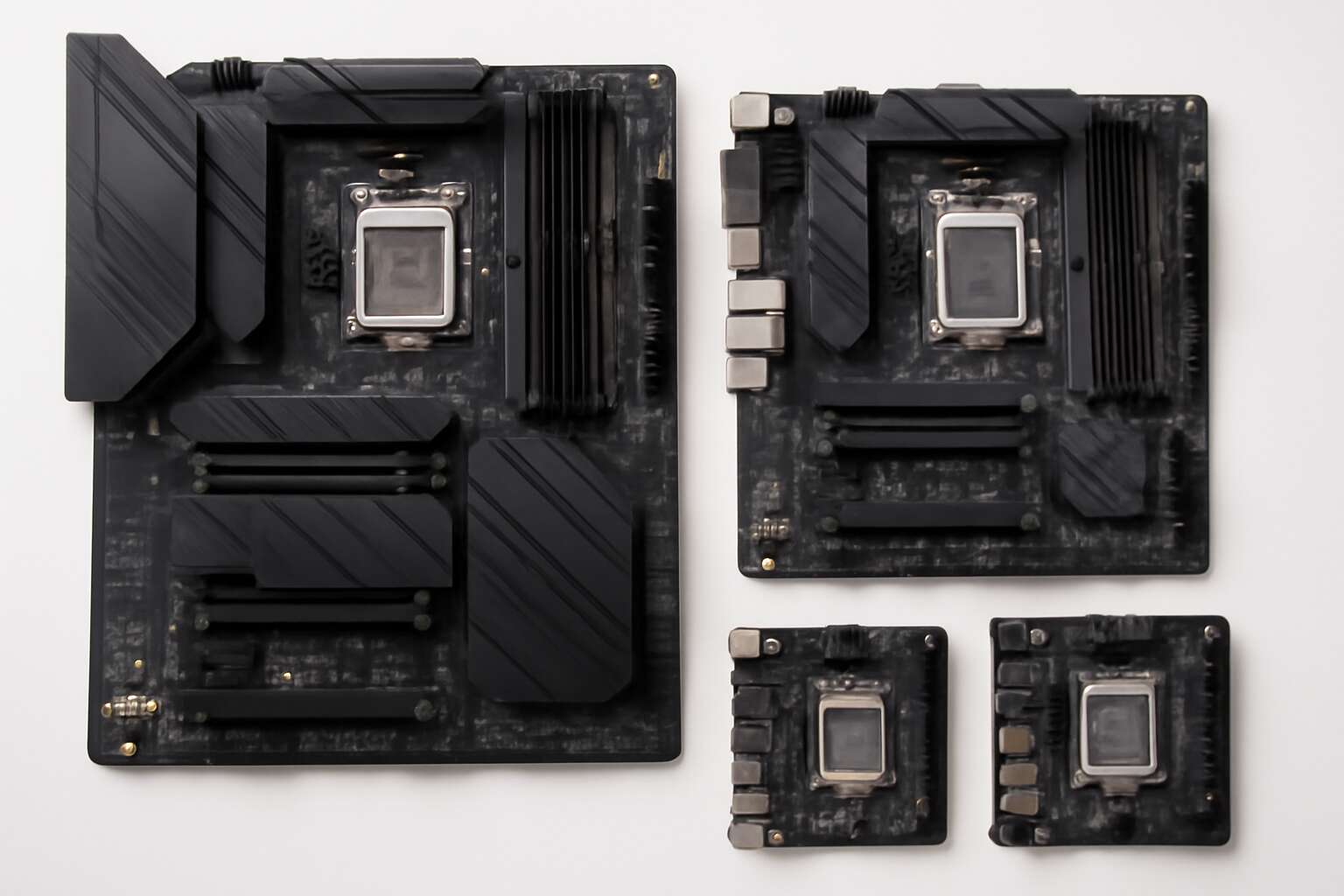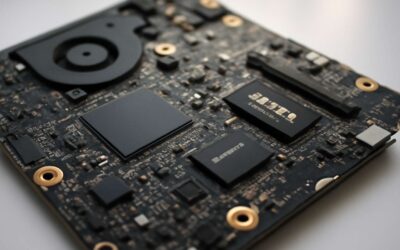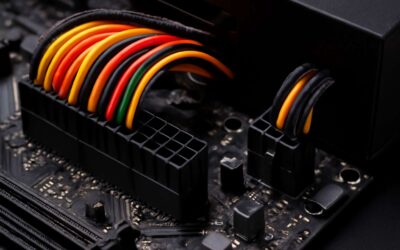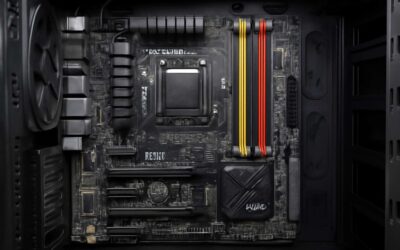Understanding Motherboard Form Factors
Definition of Motherboard Form Factors – Explains what a motherboard form factor is and its importance in PC building.
In the world of PC building, understanding how many motherboard form factors are there can be a game-changer. A motherboard’s form factor isn’t just about size; it defines compatibility, layout, and even future upgrade potential. It’s the blueprint that influences every component choice, from the CPU to the case. Recognising the importance of these variations helps builders craft systems tailored precisely to their needs.
Motherboard form factors come in a fascinating array of sizes and configurations, each serving different purposes. For example, the ATX format is the most common, offering balance and expandability, while smaller variants like microATX and Mini-ITX cater to compact builds.
- ATX
- MicroATX
- Mini-ITX
- E-ATX (Extended ATX)
- XL-ATX
This diversity ensures that whether you’re assembling a powerful gaming rig or a space-saving home server, there’s a motherboard form factor suited to your ambitions. So, how many motherboard form factors are there? The answer reveals a world of choices, each with its unique charm and utility, shaping the very heart of every PC build.
Factors Influencing Form Factor Selection – Discusses how size, components, and compatibility affect choosing a form factor.
Understanding Motherboard Form Factors Factors Influencing Form Factor Selection
Choosing the right motherboard form factor involves more than just considering size; it’s about harmonising a symphony of components, compatibility, and future-proofing. The dimensions of a motherboard directly influence how many motherboard form factors are available, each suited to different types of builds. For instance, a compact Mini-ITX may be perfect for a sleek home theatre PC, while a sprawling E-ATX can accommodate multiple GPUs and extensive storage arrays.
When pondering how many motherboard form factors are there, it’s essential to think about the specific needs of your system. Factors such as power supply compatibility, case dimensions, and expansion slots all play a role.
- The number of PCIe slots
- Number of RAM slots
- Overall component density
These elements shape the decision-making process, transforming an abstract idea into a tangible, functioning masterpiece. The delicate balance between size and capability underscores the artistry behind selecting the appropriate form factor, revealing the intricate dance of technology and design.
Popular Standard Motherboard Form Factors
ATX – Details on the ATX standard, common size, and features.
Among the many answers to the question of how many motherboard form factors are there, the ATX standard remains the most prevalent. It’s a design that embodies a delicate balance between size, expandability, and versatility. The ATX motherboard, typically measuring 305mm by 244mm, integrates seamlessly into a wide range of cases, offering a robust platform for both gaming enthusiasts and professional creators alike. Its widespread adoption is not incidental; it’s rooted in the intelligent layout of its features and the ease with which it accommodates numerous components.
What makes the ATX standard particularly compelling is its array of features. These include multiple PCIe slots, abundant RAM slots, and a design that encourages efficient airflow. For those pondering how many motherboard form factors are there, the ATX remains a cornerstone, but it’s just one of several. This form factor’s popularity demonstrates its enduring utility and the human desire for a harmonious blend of complexity and simplicity in our technological pursuits.
microATX – Overview of microATX boards and their typical use cases.
Among the plethora of motherboard form factors, microATX stands out as a versatile and popular choice for a wide range of users. Typically measuring 244mm by 244mm, microATX boards strike a perfect balance between compactness and expandability. They’re especially favoured by those building budget-friendly gaming rigs, home servers, or compact desktop systems where space is at a premium. Despite their smaller footprint compared to standard ATX boards, microATX motherboards often feature multiple PCIe slots and ample RAM capacity, making them surprisingly flexible.
For anyone asking how many motherboard form factors are there, microATX’s enduring popularity proves that size isn’t everything. Its design allows for easy integration into smaller cases without sacrificing essential features. As a result, microATX motherboards have cemented their place in the hearts of PC builders who value efficiency, affordability, and decent upgrade potential. This form factor exemplifies the modern pursuit of maximising utility within a compact, streamlined layout.
Mini-ITX – Characteristics of Mini-ITX boards suitable for compact builds.
Among the array of motherboard form factors, Mini-ITX has carved out a formidable niche for those obsessed with space-saving design. Measuring just 170mm by 170mm, these compact boards pack a punch — perfect for ultra-compact builds that demand performance without bulk. Despite their small stature, Mini-ITX motherboards often feature high-quality components and support for modern graphics cards and fast SSDs, making them ideal for minimalist gaming rigs or home theatre PCs.
What truly sets Mini-ITX apart is its ability to unlock a universe of possibilities within tiny enclosures. They often include essential features like multiple USB ports, Wi-Fi, and even M.2 slots for speedy storage. For anyone wondering how many motherboard form factors are there, Mini-ITX’s popularity proves that smaller doesn’t mean sacrificing power. Its streamlined design combines efficiency with versatility, captivating builders who crave compactness without compromise.
Extended ATX (E-ATX) – Features and applications of E-ATX motherboards.
Among the spectrum of motherboard form factors, the Popular Standard Motherboard Form Factors include the impressive Extended ATX (E-ATX). These motherboards are designed to meet the demands of high-performance computing, offering expanded space for additional components and enhanced connectivity. E-ATX boards are characterised by their larger size—measuring approximately 305mm by 330mm—allowing for more PCIe slots, RAM slots, and robust power delivery systems. This makes them especially suitable for custom gaming rigs, workstations, and servers where expandability is crucial.
What truly sets E-ATX motherboards apart is their capacity for versatility and future-proofing. They often host multiple graphics cards, extensive storage options, and advanced cooling solutions. For those pondering how many motherboard form factors are there, E-ATX stands out as a compelling option for builders seeking uncompromised performance and expandability. Many enthusiasts appreciate the ability to customise their systems within this generous footprint, knowing that their rig can evolve alongside technological advancements.
- High expandability with multiple PCIe slots for graphics cards and peripherals
- Enhanced power delivery for overclocking and demanding workloads
- Ample room for additional RAM modules and advanced cooling systems
Specialized and Less Common Form Factors
XL-ATX – Description and typical deployments of XL-ATX motherboards.
Among the shadowy corners of motherboard possibilities lurk specialised and less common form factors, each whispering promises of unique performance and tailored deployment. XL-ATX, a behemoth in the realm of motherboards, commands attention with its sprawling dimensions, often reaching beyond the standard for enthusiast-grade setups. It’s a choice reserved for those who dare to push boundaries, fitting multiple graphics cards or expansive memory arrays for high-octane gaming, professional rendering, or complex server applications.
Unlike its more ubiquitous counterparts, the XL-ATX motherboard’s deployments are specialised—found lurking inside custom high-performance workstations or advanced gaming rigs. Its size allows for extensive connectivity and multiple PCIe slots, making it a favourite amongst power users seeking maximal expansion. When pondering how many motherboard form factors are there, XL-ATX stands out as a prime example of how the macabre elegance of technical design can serve the needs of the most demanding builders.
BTX – Overview of the BTX form factor and its relevance today.
Amidst the expansive universe of motherboard form factors, some stand as relics of a bygone era, while others serve niche, specialised roles that intrigue the seasoned builder. The BTX form factor, introduced by Intel in the mid-2000s, is one such example. Designed to optimise airflow and cooling efficiency, BTX aimed to revolutionise desktop thermal management by repositioning components for better heat dissipation. Despite its promising concept, BTX’s relevance today is minimal—largely confined to legacy systems and specific industrial applications. Its eventual decline was driven by the rapid adoption of standard form factors like ATX and microATX, which offered more flexibility and broader compatibility.
Nevertheless, understanding how many motherboard form factors are there remains a fascinating journey through technological evolution. BTX’s brief stint in the limelight exemplifies how innovative designs often struggle against the inertia of established standards. Today, the form factor landscape is more diverse than ever, with specialised options catering to compact builds, high-performance rigs, and customised solutions. While BTX may no longer command the spotlight, it’s a vivid reminder of how the quest for better performance can sometimes lead down unconventional paths.
Pico-ITX – Details about ultra-compact form factor options.
In the realm of compact computing, the Pico-ITX form factor emerges as an exemplar of design ingenuity. Measuring a mere 10 x 7.2 cm, this ultra-compact motherboard option challenges conventional notions of size and functionality. Originally conceived for embedded systems and specialised industrial applications, Pico-ITX boards offer a surprising level of versatility within their diminutive footprint. They are often utilised in scenarios where space is at a premium but performance remains critical, such as digital signage, home automation, or portable device prototypes.
Despite their size, Pico-ITX motherboards can accommodate essential components and even support low-power processors, making them an intriguing choice for custom, niche projects. The appeal lies not just in their diminutive stature but in their ability to deliver reliable performance in environments where traditional full-sized motherboards would be impractical. Understanding how many motherboard form factors are there includes recognising these specialised options, which exemplify the breadth of innovation in the industry.
NuC/Other Embedded Form Factors – Exploration of small form factors used in embedded systems.
Beyond the familiar landscape of standard motherboard sizes, a fascinating realm of specialized and less common form factors beckons—each tailored for unique niches and innovative applications. Among these, NUC (Next Unit of Computing) and other embedded form factors stand out as exemplars of miniature engineering marvels. These ultra-compact boards, often measuring less than 15 cm in any dimension, are designed for embedded systems that demand both space efficiency and dependable performance.
Exploring how many motherboard form factors are there reveals a mosaic of options, each serving specific needs—whether in industrial automation, digital signage, or bespoke IoT devices. The NUC form factor, for instance, offers a sleek, highly integrated platform that seamlessly blends power and portability. Similarly, other embedded form factors—such as COM (Computer-On-Module) or Qseven—enable developers to craft customised solutions that defy traditional size constraints. Their utilisation in specialised applications underscores the industry’s relentless pursuit of innovation in form factor design.
In essence, these specialised and less common form factors are the silent architects of modern embedded technology, embodying a delicate balance of compactness and capability. They demonstrate the boundless creativity in motherboard design, prompting us to ask: how many motherboard form factors are there? The answer, ever-expanding, continues to inspire a future where size no longer dictates ambition.
Factors Influencing Choice of Motherboard Form Factor
Compatibility with PC Case – Importance of matching form factor with case size.
Choosing the right motherboard form factor is like fitting together the final piece of a complex puzzle; if it doesn’t align perfectly, the entire build can become unstable or incompatible. The size and compatibility with your PC case are paramount, as mismatched form factors can result in poor airflow, limited upgrade options, or even the inability to install components altogether.
Understanding how many motherboard form factors are there is essential for making an informed decision. For instance, a full-sized ATX motherboard might offer extensive features but demands a spacious case, while a Mini-ITX provides a sleek, space-saving alternative—ideal for compact builds. The key is to match the form factor with your case’s internal dimensions, ensuring optimal airflow and space utilization.
- Standard ATX cases accommodate ATX, microATX, and Mini-ITX motherboards.
- Small form factors like Pico-ITX and embedded options often require specialised cases.
- Extended and XL-ATX boards necessitate larger, often custom, enclosures for proper installation.
Falling into the trap of mismatched sizes can be costly and frustrating, highlighting the importance of understanding how many motherboard form factors are there and their specific spatial requirements. This knowledge arms builders with the precision needed to select the perfect case for their motherboard, ensuring seamless compatibility and future-proofing their setup.
Expansion and Connectivity Needs – Selecting based on number of slots and ports.
When contemplating how many motherboard form factors are there, one quickly realises that the array is as diverse as the cast of a theatrical production. Each form factor caters to specific needs—from the minimalist enthusiast seeking sleek compactness to the high-performance builder craving expansive connectivity. The number of options can be daunting, but understanding the factors influencing this choice—such as expansion and connectivity needs—can turn chaos into clarity.
Motherboards differ vastly in their slots and ports, which directly impact what peripherals and components can coexist harmoniously. For instance, a standard ATX motherboard offers multiple PCIe slots and ample USB ports, making it ideal for gamers and creative professionals. Conversely, Mini-ITX boards prioritise space but often feature fewer expansion options—perfect for those who value portability over expandability.
To navigate this labyrinth, consider the specific number of slots and ports required for your build. An enthusiast might need several M.2 slots, SATA ports, and high-speed USB connections, which could sway the decision towards larger form factors like E-ATX or XL-ATX. Meanwhile, a casual user with modest needs might find the microATX or Mini-ITX more than sufficient, especially when paired with a case designed for compact elegance.
Performance and Upgradeability – How form factor impacts future upgrades.
The architecture of a motherboard is a delicate ballet of spatial intelligence and future-proofing potential. When pondering how many motherboard form factors are there, it becomes evident that each choice is a microcosm of aspirations—balancing immediate needs with the capacity for growth.
Form factors such as ATX and its variants serve as the foundation for expansive upgradeability, offering multiple PCIe slots and ample connection points. Conversely, smaller form factors like Mini-ITX, while limiting in expansion, excel in portability and specialised applications. The decision hinges on the intended purpose: a high-performance gaming rig or a compact media centre.
As technology evolves, so too does the landscape of motherboard form factors. Larger boards like E-ATX and XL-ATX provide the potential for sophisticated multi-GPU setups and extensive storage arrays, enabling seamless upgrades. In contrast, ultra-compact formats such as Pico-ITX or embedded variants often restrict future expansion but excel in niche scenarios where size and efficiency dominate.
The crux of understanding how many motherboard form factors are there lies in recognising that each one embodies a specific philosophy—be it maximalist expandability or minimalist efficiency—shaping the trajectory of future upgrades with meticulous precision.
Intended Use Case – Gaming, workstation, server, or compact PC considerations.
Choosing the right motherboard form factor is akin to selecting the perfect suit—it’s a delicate dance of style, function, and future-proofing. When contemplating how many motherboard form factors are there, the answer reveals a fascinating spectrum of options, each tailored to specific ambitions. For gaming enthusiasts, a standard ATX might suffice, offering a healthy balance of expansion slots and performance. Meanwhile, a workstation user might lean towards an Extended ATX (E-ATX), seeking maximum connectivity and upgrade potential.
In niche scenarios, such as embedded systems or ultra-compact builds, the array of form factors becomes even more intriguing. Ultra-small variants like Pico-ITX or NuC/Other embedded form factors embrace efficiency and size, often at the expense of expandability. Conversely, those demanding substantial multi-GPU setups and extensive storage tend to lean into XL-ATX or even proprietary sizes.
Understanding how many motherboard form factors are there is essential to align hardware choices with intended use case—be it a high-performance gaming rig, a robust server, or a sleek portable PC. Each form factor embodies a philosophy: from maximalist expansion to minimalist elegance, shaping the future of your build with unerring precision.
Future Trends in Motherboard Form Factors
Emerging Miniaturization Techniques – Advances enabling smaller form factors.
As technological innovation accelerates, the future of motherboard form factors promises an era of unprecedented miniaturization. Cutting-edge advances, such as 3D stacking and ultra-fine manufacturing processes, are paving the way for remarkably smaller designs without sacrificing performance. These miniaturization techniques are not only expanding the possibilities for compact PC builds but also revolutionising embedded systems and IoT devices.
Emerging form factors like Pico-ITX and NuC are gaining traction, offering ultra-compact solutions tailored for specialised applications. Meanwhile, novel approaches such as System-on-Chip (SoC) integration are blurring traditional boundaries, enabling smaller motherboards with enhanced capabilities. The question of how many motherboard form factors are there continues to evolve, as new standards emerge to meet diverse needs. In fact, some experts predict that future developments could see form factors like embedded board variants becoming the norm in consumer electronics, seamlessly blending size and performance.
Modular and Custom Designs – Innovations in adaptable motherboard layouts.
Future trends in motherboard form factors are revolutionising the way we think about PC building. Modular and custom designs are leading the charge, offering unprecedented adaptability to meet diverse performance and aesthetic demands. Instead of being locked into standard sizes, enthusiasts and professionals alike are exploring innovative layouts that can be tailored to specific applications. Imagine a motherboard that can be reconfigured on the fly—sounds like sci-fi, but it’s rapidly becoming reality.
Emerging innovations such as plug-and-play modular components allow for seamless upgrades and repairs, reducing electronic waste and boosting sustainability. As these customisable layouts gain traction, the question of how many motherboard form factors are there continues to evolve. We are seeing a surge in specialised variants that cater to niche markets, from ultra-compact mini-PCs to high-performance workstations. These developments signal a future where motherboard design is less about fitting into predefined boxes and more about creating bespoke solutions—tailored, flexible, and ready for whatever technological challenge comes next.
Impact of New Technologies – How upcoming tech influences form factor development.
The relentless march of technological innovation is reshaping the landscape of motherboard form factors at a dizzying pace. Emerging technologies such as artificial intelligence, quantum computing, and ultra-fast data transfer standards are exerting a profound influence on how motherboard designs evolve. These advancements demand greater flexibility and specialised configurations, prompting manufacturers to rethink traditional boundaries.
In response, we are witnessing a surge in modular and custom motherboard layouts that can be tailored to specific needs. These innovations are not merely about size; they encompass enhanced connectivity, improved power delivery, and adaptability for future upgrades. The question of how many motherboard form factors are there continues to grow more complex as bespoke solutions emerge for niche markets—whether for ultra-compact PCs or sprawling high-performance servers.
Such rapid development hints at a future where form factors will be less rigid and more fluid, driven by the breakthroughs of tomorrow’s technology. The boundaries of what a motherboard can be are expanding, heralding an era where adaptability and customisation reign supreme.




0 Comments